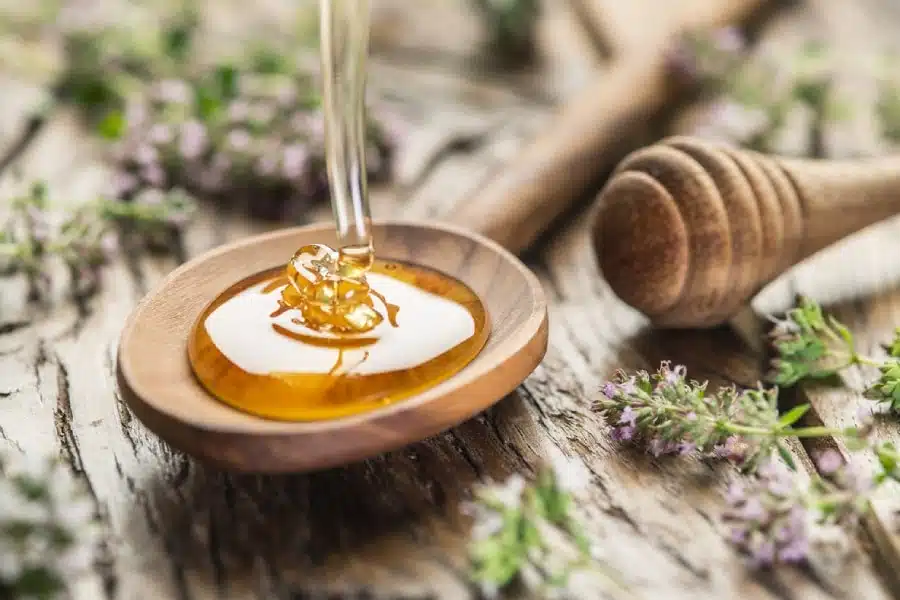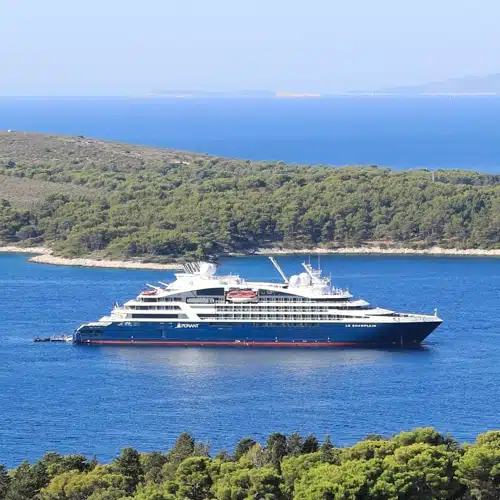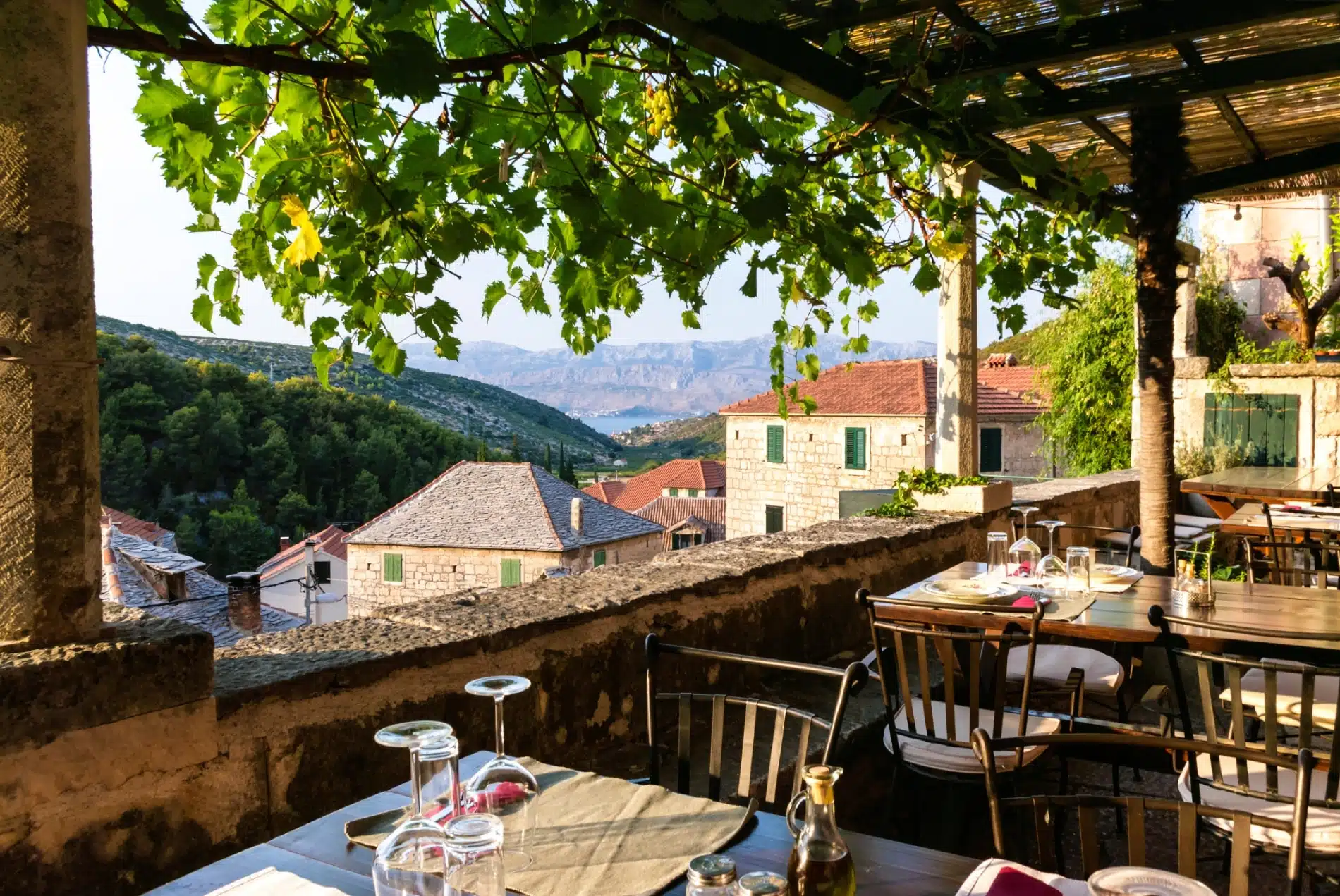Preserving local commodities and crafts of the Greek and Croatian islands
Greece and Croatia have the two largest archipelagos in the Mediterranean Sea. Farmers and artisans strive to preserve the ancestral culinary and cultural heritage of these hundreds of islands. From the Ionian Islands, the Cyclades in the Aegean Sea and Crete to the Kvarner Gulf and the Adriatic pearls of Dalmatia, meet the stewards of the Mediterranean way of life.
Olive islands
Whether Greek or Croatian, the islands of both countries are the proud custodians of some of the world’s most renowned olive oils. Although the olive tree comes from the eastern Mediterranean, it was in Ancient Greece that it was first cultivated. Today, the country is the largest producer of olive oil in the Mediterranean basin. Introduced by the Phoenicians, olive growing dates back nearly 4,000 years. The varieties have names like athinoelia, mastoidis, adramitini, amygdalolia and kalamata. But in the realm of Greek olive oil, koroneikis reign supreme. These small, bright green olives have a fruity aroma and have made the Mediterranean diet world-famous. Grown from Crete to the Ionian Islands, they are the precious fruit of olive trees cultivated using timeless techniques, thanks to the ideal climate and varied terroirs. These family-owned and operated farms, from harvesting to pressing, these families proudly share their traditions and knowledge when welcoming visitors for an olive oil tasting accompanied by a simple slice of bread.
Croatian olive oil, while not as well known, has an equally long history, a legacy of the colonisation of its islands by… the Greeks! The wonderful centuries-old olive grove in the small village of Lun on the island of Pag springs to mind: more than 80,000 wild olive trees grow in a rocky landscape swept by the winds. And as in Greece, olive growing is a family affair. The olives are picked by hand and pressed the same day to obtain top quality oil, like the PDO extra virgin olive oils from the Adriatic islands of Krk, Solta, Cres and Korčula.
The olive tree, a symbol of the Mediterranean
The olive tree stands as the eternal and sacred tree of the Mediterranean: the poets of Antiquity sang its praises, a symbol of life and longevity, a gift from Athena to the Athenians as a guarantee of peace, strength and progress. It was under its shadow 2,400 years ago that Plato taught his followers philosophy. It was with its leaves that the champions of the ancient Olympics were crowned. And it was with one of its branches that an offer of truce was extended in wartime. With its knotty silhouette and evergreen grey-green foliage, the olive tree makes light of rough terrain, growing slowly but surely. It doesn’t fear rocky ground or the sun’s rays and respects silence and solitude, standing apart from woods and forests. To grow, the only conditions it needs are passion and patience.
Mediterranean wines: in vino veritas!
Just like the ancient Latin phrase, Greek and Croatian wines are some of the oldest in the world. On the island of Tinos, a wild beauty of the Cyclades, the small village of Arnados on the slopes of Mount Kechrovouni invites you on a fascinating journey back in time. Beneath its slopes, the pretty village hides a tangle of underground passages dating from the 14th century. Used as escape routes in wartime and storage facilities and stables in peacetime, this incredible network now serves as a wine cellar for the Ballis Winery. Visit this unique place and immerse yourself in the medieval era and its authentic traditions. Ballis strives to pass on these traditions through its wines – delicate blends of traditional local grape varieties (Assyrtiko and Fileri) and foreign varieties (Merlot, Cabernet and Chardonnay). “We offer four wines – two white and two red. Our aim is for them to be as loyal as possible to the character of traditional Tinos house wine,” explains Christina Tzanakou. This house wine is characterised by high acidity and tannins and unique wood and fruit fragrances and flavours. “Like the people of Tinos who maintain a close connection with nature, we cultivate the vines in harmony with the environment, combining traditional and modern practices to preserve our heritage.”
Not to be outdone, Croatian wine-growing, it is said, has a list of indigenous grape varieties as long as its coast. The oldest Croatian varieties include Teran and Malvazija Istarska in Istria, the Dalmatian Babić from Primošten, Plavac Mali from the island of Brač, and the distinguished bouquet of Grk and highly aromatic Pošip, two rarities from the island of Korčula. And then there is the Stari Grad Plain on the island of Hvar where, in the 4th century BC, the Greeks – yet again – brought all their wine-making expertise. These highly fertile agricultural lands are now a listed UNESCO World Heritage Site. Since the Greeks, vineyards have continued to cover the ancient plain, producing some of the best wines in Croatia.
“The restaurants of the small, secret Greek islands of Symi and Amorgos, both renowned for their extra virgin olive oil, are a paradise for seafood lovers. In Symi, don’t miss simiaki garidaki small local shrimp grilled in olive oil. In Amorgos, take the time to visit the tavernas to discover tsipouro, a local eau-de-vie similar to ouzo, and the fabulous psarosoupa, a fish soup that the Greeks are thought to have taken with them to Marseille in the 5th century BC, which may be where we get bouillabaisse from.”
Honey, natural fragrance and sweetness
Olives, grapes… and bees! The last element of the sacred Mediterranean trinity is honey, which, over the centuries, has become an essential ingredient of Greece’s cultural identity. In Antiquity, this mysteriously golden and sweet substance was the food of the gods of Olympus, the “ambrosia” that Zeus tasted from the hands of the nymph Melissa, the sweet nectar that Eros dipped the tip of his arrows in. Aristotle saw it as the fruit of a celestial dew collected from flowers by bees in the early morning. Before him, Hippocrates used to praise the divine substance for its antiseptic and healing properties and for being highly nutritious. With a wealth of incredible biodiversity and a sunny climate, Greece is a bee paradise where they can gather pollen at will from pine trees, sweet chestnuts and orange trees, as well as from heather, sage and thyme. Whether forest or flower honey, Greek honey is one of the most refined in the world and one of the pillars of the country’s gastronomy. It often pairs with the famous Greek yogurt, covers baklavas and lukoumades and adds flavour and sweetness to stifado, a typical meat stew.
Here again, there is an uncanny resemblance with Croatia where honey is also one of the essential culinary treasures of its islands. Perhaps a legacy of Ulysses who, during his long odyssey, is said to have spent seven years on the island of Mljet. However, like on the Greek islands, bees here are spoilt for choice when it comes to aromatic flowers and plants. Šćedro and Šolta rosemary honey and Hvar lavender honey need no introduction due to their exceptional quality. But you can also discover more unusual, sweet treats, such as strawberry tree honey from Korčula. This winter honey has a pleasant bitterness, is popular with top chefs and is recognised for its medicinal properties. It is the pride and joy of Dalmatia, Korčula and Vlaho Komparak, an organic beekeeper – and olive grower – who uses traditional methods and respects the environment and his ancestors with the trees and wild plants that grow around him. With informative tastings, his farm is well worth a visit.

Greek and Croatian craftsmanship, a reflection of the soul of the Mediterranean
It was also in the hands of Greek and Croatian men and women that the soul of the Mediterranean was shaped. From the marble workers of the village of Pyrgos on the island of Tinos and in those of the stonemasons of the island of Brač off the coast of Split: two stone realms whose know-how has crossed time and space and spread throughout the world, from disciple to disciple. There are also the pottery artisans of the elegant Sifnos in the southwest of the Cyclades archipelago and a handful of ceramists perpetuate this ancient and refined art and welcome you into their studios. Finally, there are the lace-makers on the island of Pag whose dextrous hands have been wielding needles with precision for generations, so continuing to weave the history of a popular and delicate craft. Perhaps even more surprising is the agave lace made with devotion by the nuns of a Benedictine monastery on the island of Hvar: the Benedictine sisters remain the sole guardians of this rare and demanding practice.
In both Greece and Croatia, farmers and artisans are doing what it takes to keep their traditions and heritage alive. Meeting these custodians of age-old know-how and understanding their history means participating in the safeguarding and transmission of these treasures of the cultural heritage of humanity.
Photos credits : © Lily Piel / © Istock

PONANT takes you there
Enjoy the thousand and one facets of the Mediterranean lifestyle on a cruise on the Mediterranean Sea



